
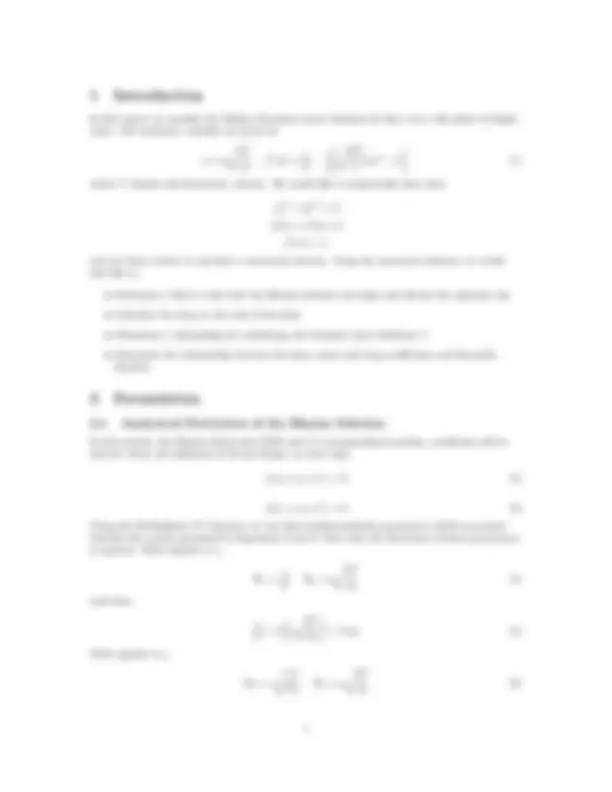
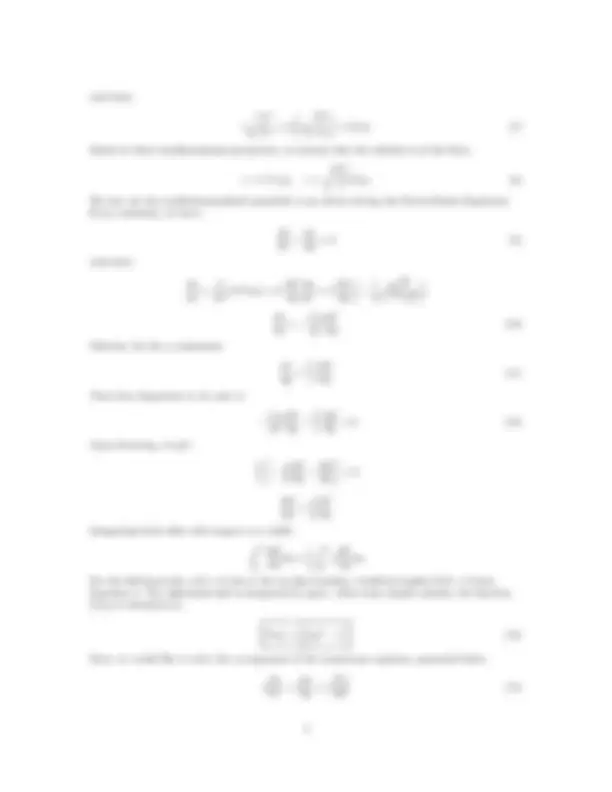
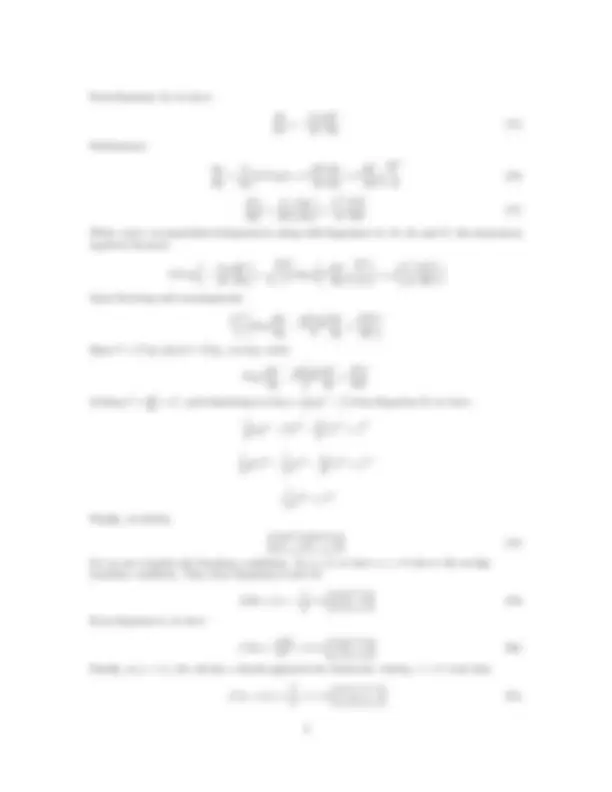
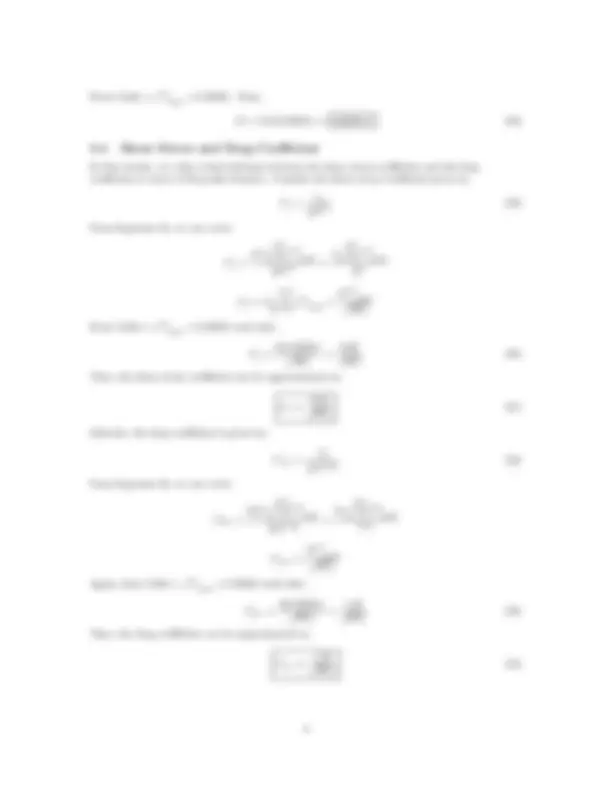
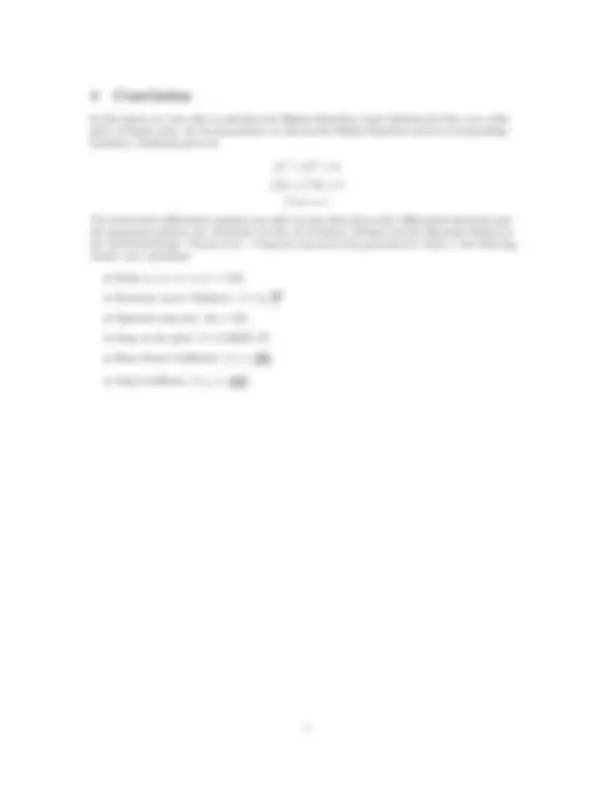
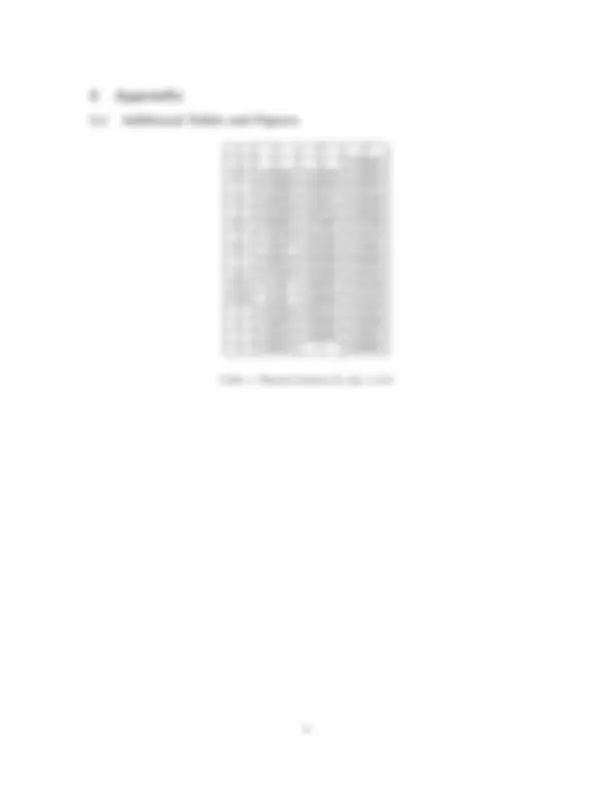



Study with the several resources on Docsity

Earn points by helping other students or get them with a premium plan


Prepare for your exams
Study with the several resources on Docsity

Earn points to download
Earn points by helping other students or get them with a premium plan
Community
Ask the community for help and clear up your study doubts
Discover the best universities in your country according to Docsity users
Free resources
Download our free guides on studying techniques, anxiety management strategies, and thesis advice from Docsity tutors
An analytical derivation of the Blasius Solution for boundary layer flow over a flat plate using the Navier-Stokes Equations and the Buckingham Pi Theorem. It also includes the results of the numerical solution obtained using Euler's Method and the shooting method, such as the convergence of the solution, the optimum step size, the boundary layer thickness, and the calculation of the shear stress coefficient and drag coefficient.
Typology: Study notes
1 / 13

This page cannot be seen from the preview
Don't miss anything!








such that:
v
x U ν = f
y
xν
= G(η) (7)
Based on these nondimensional parameters, we assume that the solution is of the form:
u = U F (η), v =
U ν x G(η) (8)
We now use the nondimensionalized quantities to go about solving the Navier-Stokes Equations. From continuity, we have,
∂u ∂x
∂v ∂y
such that:
∂u ∂x
∂x
(U F (η)) = U
∂η
∂η ∂x
∂η
y
x−^3 /^2
ν
∂u ∂x
U η 2 x
∂η
Likewise, for the y component:
∂v ∂y
x
∂η
Then from Equations 9, 10, and 11:
U η 2 x
∂η
x
∂η
Upon factoring, we get:
U x
η 2
∂η
∂η
∂η
η 2
∂η
Integrating both sides with respect to η yields: ∫ (^) η
0
∂η
dη =
∫ (^) η
0
η
∂η
dη
For the left-hand side, v(0) = 0 due to the no-slip boundary condition implies G(0) = 0 from Equation 8. The right-hand side is integrated by parts. After some simple calculus, the function G(η) is calculated as:
G(η) =
ηf ′^ − f
Next, we would like to solve the x-component of the momentum equation, presented below.
u
∂u ∂x
∂u ∂y = ν
∂^2 u ∂y^2
From Equation 10, we have:
∂u ∂x
U η 2 x
∂η
Furthermore:
∂u ∂y
∂y
U F (η)
∂η
∂η ∂y
∂η
xν
∂^2 u ∂y^2
∂y
∂u ∂y
xν
∂η^2
With u and v as prescribed in Equation 8, along with Equations 14, 15, 16, and 17, the momentum equation becomes:
U F (η)
U η 2 x
∂η
U ν x G(η)
∂η
xν
= ν
xν
∂η^2
Upon factoring and rearrangement:
U 2 x
G(η)
∂η
ηF (η) 2
∂η
∂η^2
Since F = F (η) and G = G(η), we may write:
G(η) dF dη
ηF (η) 2
dF dη
d^2 F dη^2
Letting F = (^) dηdf = f ′, and substituing in G(η) = (^12)
ηf ′^ − f
from Equation 13, we have:
1 2
ηf ′^ − f
f ′′^ −
η 2 f ′f ′′^ = f ′′′
ηf ′f ′′^ −
f f ′′^ −
η 2 f ′f ′′^ = f ′′′
f f ′′^ = f ′′′
Finally, we obtain:
f f ′′^ + 2f ′′′^ = 0 (18)
Let us now examine the boundary conditions. At η = 0, we have u, v = 0 due to the no-slip boundary condition. Thus, from Equations 8 and 13:
f ⇒ f (0) = 0 (19)
From Equation 8, we have:
f ′(0) = u(0) U
= 0 ⇒ f ′(0) = 0 (20)
Finally, as η → ∞, the velocity u should approach the freestream velocity, u → U such that:
f ′(η → ∞) =
= 1 ⇒ f ′(∞) = 1 (21)
δ = y = η
xν U
xν U
xν U
In this section, the optimum step size ∆η is calculated. The term optimized in this report will refer to the last value before which the change in the initial guess h(1) used in regards to the shooting method no longer exceeds the change in step size. Results for varying mesh sizes are given in Figure 2.
Figure 2: Step Size Optimization
From this figure, we can see that the change in the initial guess h(1) never exceeds the change in step size. Thus, decreasing the step size from the initial size of ∆η = 0.01 will only result in more computational expense with nearly the same amount of computational accuracy. Thus, we conclude that the optimum step size for this problem is:
∆η = 0. 01 (24)
In this section, the drag on the wall of the plate is calculated. The shear stress on the wall τw is given by:
τw = μ
∂u ∂y
y=
= μU
xν
∂η
η=
= μU
xν
f ′′
η=
Then the drag force is given by:
0
τwdx =
0
μU
xν
f ′′
η=
dx = 2μU
U x ν
f ′′
η=
Evaluating for a unit length of L = 1, a freestream velocity equal to unity, dynamic viscosity μ = 1. 01 e − 3, and kinematic viscosity ν = 1. 01 e − 6, we obtain:
D = 2(1. 01 e − 3)(1)
f ′′
η=
= 2. 01 f ′′
η=0 (27)
From Table 1, f ′′
η=0 = 0.33031. Thus,
D = 2.01(0.33031) = 0. 66391 N (28)
In this section, we wish to find relations between the shear stress coefficient and the drag coefficient in terms of Reynolds Number. Consider the shear stress coefficient given by:
Cf =
τw 1 2 ρU^
From Equation 25, we can write:
Cf =
μU
U xν f^
η= 1 2 ρU^
ν
U xν f^
η= 1 2 U
Cf = 2
ν U x
f ′′
η=0 =
2 f ′′
√ η= Rex
From Table 1, f ′′
η=0 = 0.33031 such that:
Cf =
Rex
Rex
Thus, the shear stress coefficient can be approximated as:
Cf ≈
Rex
Likewise, the drag coefficient is given by:
Cf m =
1 2 ρU^
From Equation 26, we can write:
Cf m =
2 μU
U x ν f^
η= 1 2 ρU^
4 ν
U x ν f^
η= U L
Cf m =
4 f ′′
√ η= ReL
Again, from Table 1, f ′′
η=0 = 0.33031 such that:
Cf m =
ReL
ReL
Thus, the drag coefficient can be approximated as:
Cf m ≈
ReL
Figure 3: MATLAB Script (1)
[1] C¸ engel, Yunus A., and John M. Cimbala. Fluid Mechanics: Fundamentals and Applications. McGraw-Hill Higher Education, 2006.
1 Blasius Solution for ∆η = 0. 01.............................. 4 2 Step Size Optimization................................... 5 3 MATLAB Script (1).................................... 9 4 MATLAB Script (2).................................... 10